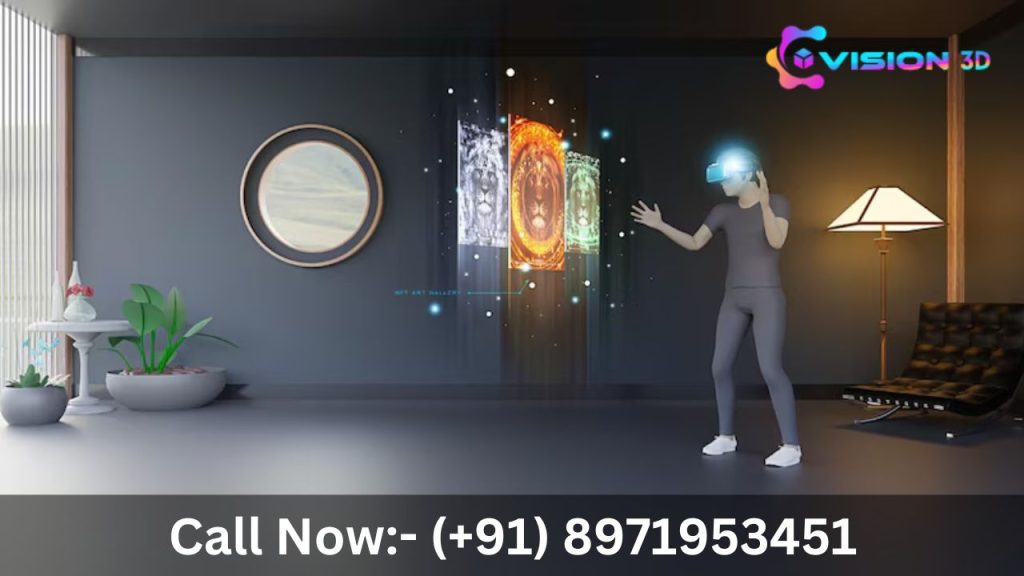Over the years, the television industry has evolved from black and white television to color television and traditional television to streaming services. However, the latest innovation in visual technology has the potential to revolutionize the way we consume and interact with content. By 2025, the 3D holographic display technology market will reach $4 billion, which means that this technology is on the rise and might become an integral part of our day-to-day lives. In this blog, we will discuss in detail how will 3D holograms replace traditional television in the future.
3D Holographic Display – Overview
The holographic display produces immersive three-dimensional images. Holographic displays differ from ordinary ones in that they do not require special glasses or headsets for viewing.
Advantages of 3D Holographic Display Technology
- 3D Image Quality: Holographic displays create images that are dimensional and look like they are hanging in mid-air.
- Viewing Angle: The holographic displays can be viewed from different angles hence a larger area is covered.
- No Screen Door Effect: Unlike ordinary TV screens, 3D holographic display technology does not have the ‘screen door effect’. It enables the production of a more realistic image.
- Reduced Motion Blur: Holographic displays can minimize motion blur and give a crisp and smoother image.
- Interactivity: The Holographic TV can offer a more engaging experience by controlling the image in real time via hand gestures
Challenges and Barriers to Adoption of 3D Holographic Display Technology
However, some issues need to be solved to make holographic displays a more feasible solution for television.
- Cost
This is because the production of the said holographic displays is expensive, which is a major disadvantage. Presently, the costs of equipment used to generate good holography images are high and unaffordable to the common consumer.
- Technical Limitations
Holographic displays, for example, have some practical issues; they require specific hardware and software, and there is a problem with creating big-sized high-quality holographic images. Also, the number of calculations that have to be made to produce and display holographic content in real-time might be a problem.
- Viewer Experience
Another challenge is the fact that users ought to have a comfortable experience while viewing. Some of the factors that may affect the overall user experience include eye strain, motion sickness, and the requirement of a special viewing device.
- The Potential Impact on the Television Industry
Nevertheless, it is impossible not to notice the prospects of holographic displays in the television industry. Hence, if the technology is to advance further and be made available to more people, it has the potential to change the face of traditional television in the following ways. It may affect the overall user experience including eye strain, motion sickness, and the requirement of a special device.
- Immersive Viewing Experiences
Holographic displays can enable the audience to feel as if they are in the middle of the action, which can make for a more engaging experience. This could result in a change in the content strategy and how it is delivered where more focus is placed on designing something that is engaging to the audience.
- Cost Savings in Content Production
Holographic displays can also result in reduced expenses in the creation of television shows. Thus, cutting down on the expenses for sets and props, it could become cheaper for content creators to create quality and visually appealing content. It will be
Holographic display can result in reduced expenses in the creation of television
- Personalized and Interactive Viewing
Holographic displays could also allow for a more immersive experience and users can even change the environment in which they are viewing or even the content in real time. This may create new possibilities for content creators to interact with their audience in new ways. It will enable 3D holograms replace traditional television in the future.
Conclusion
it is quite interesting to watch how the industry is slowly unraveling this technology and how 3D holograms replace traditional television in the future.The holographic display can result in reduced expansion. This may create content opportunities for the content creator to create quality and visually appealing content. To know more about the detailed usage of 3D hologram products, you can connect with customer care at +91-8971953451.

